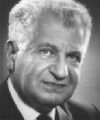Template:Selected anniversaries/November 28: Difference between revisions
Jump to navigation
Jump to search
No edit summary |
No edit summary |
||
| Line 1: | Line 1: | ||
<gallery> | <gallery> | ||
||1520 | ||1520: An expedition under the command of Ferdinand Magellan passes through the Strait of Magellan. | ||
||1660 | ||1660: At Gresham College, twelve men, including Christopher Wren, Robert Boyle, John Wilkins, and Sir Robert Moray decide to found what is later known as the Royal Society. | ||
||1700 | ||1700: Nathaniel Bliss born ... astronomer and mathematician. | ||
File:William Blake by John Flaxman c1804.jpg|link=William Blake (nonfiction)|1757: Poet, painter, and printmaker [[William Blake (nonfiction)|William Blake]] born. | File:William Blake by John Flaxman c1804.jpg|link=William Blake (nonfiction)|1757: Poet, painter, and printmaker [[William Blake (nonfiction)|William Blake]] born. | ||
||1772 | ||1772: Luke Howard born ... chemist and meteorologist. | ||
||William Froude | ||1810: William Froude born ... engineer, hydrodynamicist and naval architect. He was the first to formulate reliable laws for the resistance that water offers to ships (such as the hull speed equation) and for predicting their stability. Pic. | ||
||1814 | ||1814: The Times of London becomes the first newspaper to be produced on a steam-powered printing press, built by the German team of Koenig & Bauer. | ||
||Samuel Vince | ||1821: Samuel Vince dies ... clergyman, mathematician and astronomer at the University of Cambridge. | ||
||1837 | ||1837: John Wesley Hyatt born ... engineer. | ||
||William Stanley Jr. | ||1858: William Stanley Jr. born ... physicist born in Brooklyn, New York. In his career, he obtained 129 patents covering a variety of electric devices. In 1913, he patented an all-steel vacuum bottle, and formed the Stanley Bottle Company. Pic. | ||
||Arthur Gordon Webster | ||1863: Arthur Gordon Webster born ... physicist, was a founder and president of the American Physical Society. Pic. | ||
||1872 | ||1872: Mary Somerville dies ... astronomer, mathematician, and author. | ||
||1873 | ||1873: Caterina Scarpellini dies ... astronomer and meteorologist. | ||
| | ||1898: John Wishart born ... mathematician and agricultural statistician. He first formulated a generalised product-moment distribution named the Wishart distribution in his honor, in 1928. Pic. | ||
||Albert William Tucker | ||1905: Albert William Tucker born ... mathematician who made important contributions in topology, game theory, and non-linear programming. Pic. | ||
File:Claude Lévi-Strauss receiving Erasmus Prize (1973).jpg|link=Claude Lévi-Strauss (nonfiction)|1908: Anthropologist and ethnologist [[Claude Lévi-Strauss (nonfiction)|Claude Lévi-Strauss]] born. His work will be key in the development of the theory of structuralism and structural anthropology. | File:Claude Lévi-Strauss receiving Erasmus Prize (1973).jpg|link=Claude Lévi-Strauss (nonfiction)|1908: Anthropologist and ethnologist [[Claude Lévi-Strauss (nonfiction)|Claude Lévi-Strauss]] born. His work will be key in the development of the theory of structuralism and structural anthropology. | ||
||1913 | ||1913: Cliff Addison born ... chemist and academic. | ||
||Johann Wilhelm Hittorf | ||1914: Johann Wilhelm Hittorf dies ... physicist who was born in Bonn and died in Münster, Germany. Hittorf was the first to compute the electricity-carrying capacity of charged atoms and molecules (ions), an important factor in understanding electrochemical reactions. He formulated ion transport numbers and the first method for their measurements. | ||
||Wilfred Kaplan (b. November 28, 1915) was a professor of mathematics. His research focused on dynamical systems, the topology of curve families, complex function theory, and differential equations. Pic. | ||Wilfred Kaplan (b. November 28, 1915) was a professor of mathematics. His research focused on dynamical systems, the topology of curve families, complex function theory, and differential equations. Pic. | ||
Revision as of 16:54, 27 August 2018
1757: Poet, painter, and printmaker William Blake born.
1908: Anthropologist and ethnologist Claude Lévi-Strauss born. His work will be key in the development of the theory of structuralism and structural anthropology.
1953: Mathematician and crime-fighter Alice Beta testifies before the House Committee on Un-American Activities.
1954: Physicist Enrico Fermi dies. He has been called the "architect of the nuclear age" and the "architect of the atomic bomb".
1966: Physicist Boris Yakovlevich Podolsky dies. He worked with Albert Einstein and Nathan Rosen on entangled wave functions and the EPR paradox.




